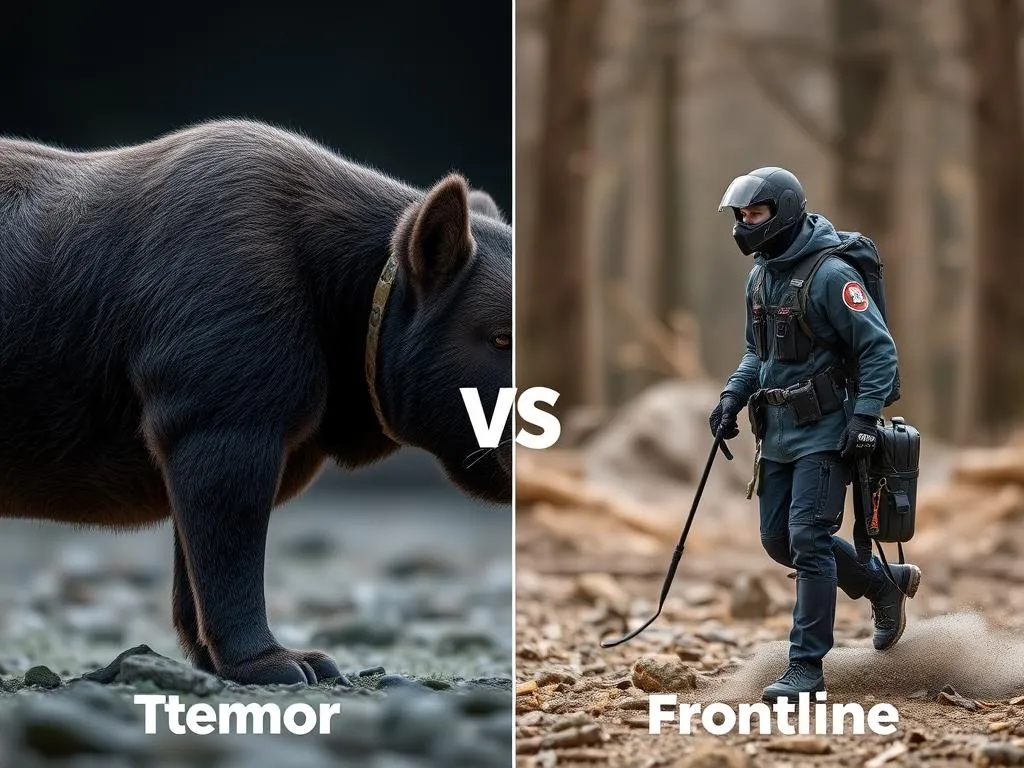
Flea and tick prevention is crucial for maintaining the health and well-being of our pets. These tiny parasites not only cause discomfort but can also transmit diseases that affect both animals and humans. Among the various products available, PetArmor Plus and Frontline Plus are two popular options that pet owners often consider. This article compares these two products to help you make an informed decision on the best choice for your furry friend.
Understanding Flea and Tick Prevention
The Importance of Flea and Tick Control
Fleas and ticks pose significant health risks to pets, including skin irritations, allergic reactions, and the transmission of serious diseases such as Lyme disease and tapeworms. These pests can also affect humans, leading to bites, allergic reactions, and even the spread of pathogens. Economically, flea and tick infestations can lead to costly veterinary bills, treatments, and even damage to your home.
How Flea and Tick Products Work
Flea and tick prevention products typically contain active ingredients that disrupt the life cycle of these parasites. Common mechanisms include:
- Insect growth regulators: These disrupt the development of larvae and eggs, preventing future infestations.
- Neurotoxins: These target the nervous system of fleas and ticks, leading to their paralysis and death.
Understanding the active ingredients in these products is essential for choosing the right one for your pet.
Overview of PetArmor Plus
Product Composition
PetArmor Plus features a combination of active ingredients designed to effectively combat fleas and ticks. The primary components include:
- Fipronil: An insecticide that disrupts the nervous system of fleas and ticks.
- S-methoprene: An insect growth regulator that prevents the maturation of flea eggs and larvae.
Together, these ingredients work to eliminate existing infestations and prevent future ones.
Application Method
PetArmor Plus is available in a spot-on application format. The application process involves:
- Parting the fur at the base of your pet’s neck.
- Squeezing the tube to apply the solution directly onto the skin.
- Ensuring the product is placed in an area where your pet cannot lick it off.
Dosage and frequency guidelines recommend applying the product once a month for continued protection.
Effectiveness
PetArmor Plus is known for its long-lasting effectiveness, providing protection from fleas and ticks for up to 30 days. Clinical studies have shown that it significantly reduces flea populations within 12 hours and ticks within 48 hours of application.
Safety and Side Effects
While PetArmor Plus is generally safe for most pets, some common side effects can occur, including:
- Skin irritation at the application site
- Mild gastrointestinal upset
Precautions should be taken for young, pregnant, or nursing pets, as well as those with underlying health conditions. Always consult your veterinarian before starting any new flea and tick prevention regimen.
Overview of Frontline Plus
Product Composition
Frontline Plus also utilizes a powerful combination of active ingredients, including:
- Fipronil: Like in PetArmor, it targets the nervous system of fleas and ticks.
- (S)-methoprene: An insect growth regulator that effectively prevents the development of flea eggs and larvae.
This dual-action formula ensures comprehensive flea and tick control.
Application Method
Frontline Plus is also a spot-on treatment, and the application method mirrors that of PetArmor Plus:
- Part the fur between the shoulder blades.
- Apply the solution directly to the skin, ensuring it is not licked off.
Monthly applications are recommended for optimal protection.
Effectiveness
The effectiveness of Frontline Plus is comparable to PetArmor, providing up to 30 days of protection against fleas and ticks. Studies have demonstrated that it can kill fleas within 24 hours and ticks within 48 hours of application.
Safety and Side Effects
Frontline Plus is considered safe for dogs and cats when applied as directed. Common side effects may include:
- Temporary skin irritation
- Excessive grooming or licking at the site of application
As with any flea and tick product, special care should be taken for young, pregnant, or nursing animals, and a veterinary consultation is advised before use.
PetArmor Plus vs Frontline Plus: A Comparative Analysis
Effectiveness Comparison
Both PetArmor Plus and Frontline Plus offer long-lasting protection for up to 30 days, effectively killing fleas and ticks upon contact. However, some pet owners report differences in performance depending on individual pet reactions. It’s essential to monitor your pet after using either product to determine which one works best for them.
Safety Profile Comparison
While both products are generally safe, side effects can occur. PetArmor Plus may cause mild gastrointestinal upset, while Frontline Plus might lead to excessive grooming. Each pet may react differently; thus, it’s crucial to observe your pet for any adverse effects after application.
Application and User Experience
Both products are easy to apply, but the experience can vary based on pet temperament. If your pet is anxious or fidgety, the application process may be more challenging. Some users report that their pets are more accepting of one product over the other, which can influence their choice.
Cost Analysis
Cost can be a deciding factor for many pet owners. On average, PetArmor Plus is often priced lower than Frontline Plus, making it a more budget-friendly option. However, prices can vary based on retailers and available promotions, so it’s recommended to shop around for the best deal.
Making the Right Choice for Your Pet
Factors to Consider When Choosing a Product
When deciding between PetArmor Plus and Frontline Plus, consider the following factors:
- Pet age and weight: Ensure the product is suitable for your pet’s age and size.
- Health status: Consult your veterinarian if your pet has any underlying health conditions.
- Environmental factors: Flea and tick prevalence can vary by geographic location and climate, influencing which product may be more effective.
Recommendations for Specific Situations
- Young pets: For puppies or kittens, consult your veterinarian for the safest flea and tick prevention options.
- Pets with allergies: If your pet has known sensitivities, discuss with your vet which product may be best suited for their needs.
Conclusion
In summary, both PetArmor Plus and Frontline Plus are effective flea and tick prevention solutions with their own unique benefits and potential drawbacks. The choice between them often depends on your pet’s specific needs, your budget, and personal preference. Always consult with your veterinarian for tailored advice based on your pet’s health and lifestyle.
Frequently Asked Questions (FAQs)
What is the best time of year to start flea and tick prevention?
It’s advisable to start flea and tick prevention before the warmer months when these pests are most active. In many regions, this means starting applications in early spring.
Can I use PetArmor Plus and Frontline Plus interchangeably?
It’s generally not recommended to switch between products without consulting your veterinarian. Each product has specific active ingredients and mechanisms, and switching may lead to ineffective treatment.
How do I know if my pet has fleas or ticks?
Signs of fleas include excessive scratching, red or irritated skin, and the presence of flea dirt (small black specks) in your pet’s fur. Ticks can often be found on your pet’s skin, particularly in warm, moist areas. Regular grooming can help identify these pests early.
What should I do if my pet has an adverse reaction to flea and tick prevention products?
If you notice any signs of an adverse reaction, such as excessive scratching, swelling, or lethargy, contact your veterinarian immediately for guidance.
By equipping yourself with knowledge about these two popular flea and tick prevention products, you can make informed decisions that will benefit your pet’s health and comfort.









